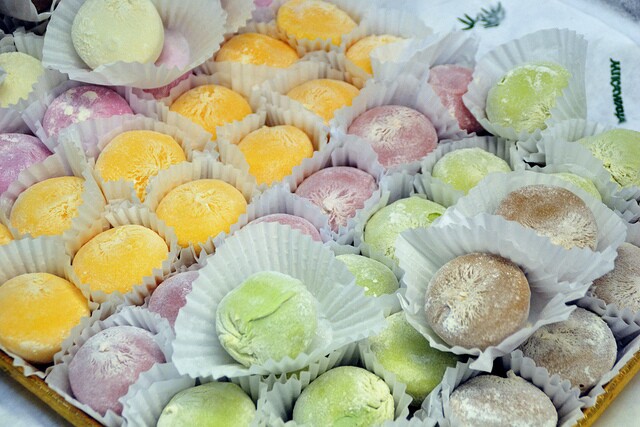Iconic Neighborhood Restaurants: Little Tokyo
By most accounts, the first Japanese-owned business, a restaurant owned by a former seaman, opened in Little Tokyo in 1886. It was an era when racial covenants barred people of color from living in many neighborhoods. Over the next two decades a small but vibrant community took root: After the 1906 San Francisco earthquake, thousands of former railway workers headed south and ended up in the neighborhood. By the time president Franklin Roosevelt signed Executive Order 9066 in 1942, Little Tokyo had become the heart of L.A.'s thriving Japanese-American community.
During World War II, approximately 30,000 Japanese Americans living in the neighborhood were forced into concentration camps. African-Americans moved into the area, which for three years became known as Bronzeville. After WWII, many Japanese residents and business owners returned and Little Tokyo once again became a hub for Japanese American businesses. In subsequent decades, as much of downtown fell into disrepair, Little Tokyo remained one of the area's nicest neighborhoods.

Daikokuya: Before the city was dotted with top-notch noodle shops, this first wave ramen restaurant set the standard. The rich porky broth and chewy noodles had crowds queuing up, sometimes for nearly an hour. Daikokuya now boasts three additional locations (Monterey Park, Arcadia and West L.A.) and faces much stiffer competition, but its menu remains a favorite.
327 E. 1st St., 213-626-1680
Suehiro Café: It's hardly haute cuisine but this homey Japanese-American café is emblematic of the kind of restaurant that used to populate Little Tokyo. (Mitsuru Café is another example.) The tempura is crisp, the tonkatsu is on point and the combo meal prices can't be beat. If Norm's had a Japanese equivalent, this'd be it -- except that Norm's is a chain and Suehiro is a unicorn. Many of the waitresses seem like they've worked here for decades, happily greeting regulars. Another bonus: it's open until 1 a.m. most nights and 3 a.m. on weekends.
337 E. 1st St, 213-626-9132
Far Bar: Located in one of the oldest buildings in the neighborhood (maybe the city), you won't miss this landmark, thanks to its iconic neon sign. The Far East Chop Suey Café was a Chinese restaurant that opened in 1935, although the building dates back to 1890. After sustaining damage in the Northridge earthquake, it was closed for more than a decade. In 2005 it reopened as a modest watering hole. Since then it has become a haven for beer fans, boasting 40 taps with craft brews. The patio, adorned with strings of lights, is simultaneously urban and romantic -- but you have to know how to find it. Walk down a narrow alley between two buildings and voila, you're in the middle of one of the neighborhood's most charming slices of history.
347 E. 1st St., 213-617-9990

Mikawaya: If you've ever savored those miniature ice cream balls wrapped in chewy dough that come from the freezer section of Trader Joe's, you have one company to thank. In 1970, Mikawaya had been selling traditional Japanese sweets for the better part of 80 years when president and CEO Frances Hashimoto took over. She was only 27 but she would go on to invent Mikawaya's signature product: mochi ice cream. The 105-year-old company, which until very recently had remained family-owned, now sells millions of the frozen treats every year. At its Little Tokyo flagship store, you'll find the glutinous rice delicacy in all kinds of shapes and colors along with gelato and other desserts. We think Hashimoto's great uncle Ryuzaburo, who founded the business in 1910, would have approved.
118 Japanese Village Plaza Mall, 213-624-1681
Aloha Cafe: Wherever there's a sizable Japanese-American population, you're likely to find Hawaiian fare. In 2008, after more than a decade in Monterey Park, this no frills café moved to Little Tokyo where it continues to dish out Japanese teriyaki, Chinese char-siu, Portuguese sausage, Korean "Kal-B Beef" and Hawaiian staples like fried Spam musubi and pork lau lau (pork steamed in taro leaves). Portions are large. Prices are low. And most dishes come with hearty scoops of macaroni salad and rice. The tender kalua pork is a favorite but the most extravagant dish is the loco moco, a hot mess of white rice, hamburger patties, grilled onions, eggs and brown gravy. You couldn't find a better symbol of the culinary mashup that is modern Hawaiian cuisine.
410 E. 2nd St., 213-346-9930


